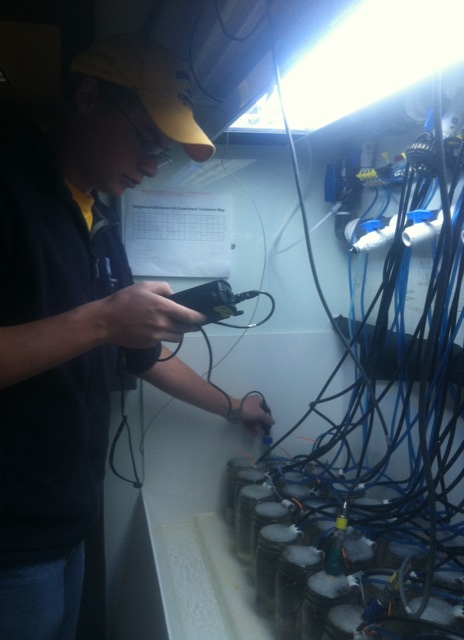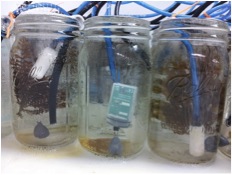
By Alex Neu, CSUMB/UROC research assistant
Not too many undergrads can say they have been fortunate enough to do research. Even fewer can say they've been a part of research going into their junior year. And just about one can say he’s been able to be a part of a collaborative research project between Moss Landing Marine Laboratories (MLML) and Scripps Institution of Oceanography (SIO). My name's Alex Neu and I'm that undergrad. I'm heading into my junior year this fall at California State University - Monterey Bay (CSUMB) and have just started a position as a student researcher with CSUMB’s Undergraduate Research Opportunities Center (UROC). This summer MLML graduate student Emily Donham and I are spending our summer researching the effects of climate change on temperate rocky reef communities here in La Jolla as part of a CA Seagrant project funded to co-PI’s Dr. Scott Hamilton (MLML) and Dr. Jennifer Smith (SIO).
Our project includes studying the differential effects of increased CO2 on calcifying and fleshy algal species. Increased dissolved CO2 leads to a decreased pH and is commonly referred to as ocean acidification. Currently we are working with 2 fleshy species that are found here locally. One species is native to southern California and the other is invasive, or has been introduced and is adversely impacting its new habitat. This week marks the half way point in our first round of experimentation and we are all excited to see what kind of results we'll find at the end of the month. Will one species fair better than the other? What sort of implications could this have for an invasive species’ ability to outcompete a native in a changing ocean environment?

Our day-to-day activities here include monitoring pH levels in each of our samples, taking water samples from randomly chosen jars to monitor carbonate chemistry, and general upkeep of the wetlab and our electronic data recording systems. We have also done some collecting of crustose coralline algae (CCA) for identification and potential use in future experiments. I have even learned how to do herbarium presses, which are a way of preserving algal specimens by flattening and drying them (apparently Plocamium cartilagineum is everyone's favorite algae to press).
Thanks to UROC, SIO, and MLML for making this research opportunity possible!

